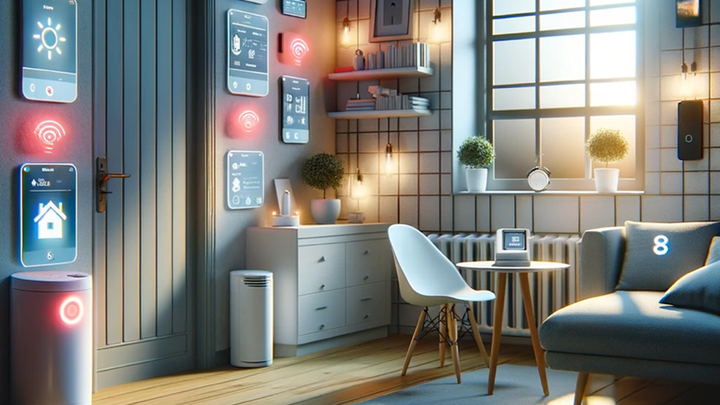Physical Guards – AI based Security for Smart Home

The rapid evolution of smart home technologies has significantly enhanced home security, focusing on detecting intrusions and anomalies. One novel approach is the use of physical guards, designed to monitor and protect the data integrity within a smart home network. This student project is centered on the development and assessment of a physical guard system in a smart home environment in cooperation with M2M solutions. The project involves setting up a sophisticated smart home system, complete with microcontrollers and sensors that mimic real-life scenarios, thus generating relevant data. Students will construct their dataset using this setup and simulate potential security breaches. The aim is to develop AI algorithms capable of identifying irregular patterns indicative of potential attacks and to elucidate the functioning of these models. This project provides valuable experience in implementing smart home security solutions and contributes to the broader understanding of AI's role in predicting and preventing security breaches in our increasingly connected world.
The AI should:
- Anomaly Detection: It must efficiently identify irregularities in both univariate and multivariate sensor data, utilizing the data generated from the smart home test setup. This involves recognizing patterns and deviations within a complex array of sensor readings, ensuring accurate detection of any abnormal activity or environmental changes.
- User and Environment Profiling: The AI should be capable of discerning unique behavioral or usage patterns ('fingerprints') attributable to individual users, as well as the overall smart home environment. This involves analyzing data to distinguish specific user interactions and the collective operational profile of the smart home system.
- Adaptive Learning: The AI must be equipped with the ability to adapt to evolving environments, such as the integration of new sensors or the removal of existing ones. This requires the system to continuously learn and adjust its algorithms to maintain effectiveness and accuracy in a dynamically changing setting.
- Explainability: Post-implementation, the AI's decision-making processes should be interpretable using suitable Explainable AI (XAI) techniques. This ensures transparency and comprehensibility in how the AI system analyzes data and makes conclusions, which is crucial for user trust and understanding.
Programming Language:
Python has been chosen as the primary programming language for the AI component of this project due to its widespread application in AI. Familiarity with C would be advantageous, particularly for interacting with hardware components like Arduino and Raspberry Pi, though it's not a prerequisite and can be learned during the course of the project.
AI Model:
The team has the autonomy to select the AI model that best fits the project's objectives. This choice allows for flexibility and innovation in addressing the unique challenges presented by the smart home environment.
Frameworks:
Teams are free to utilize any frameworks, libraries, or open-source solutions that aid the project, provided they adhere to reasonable licensing terms.
